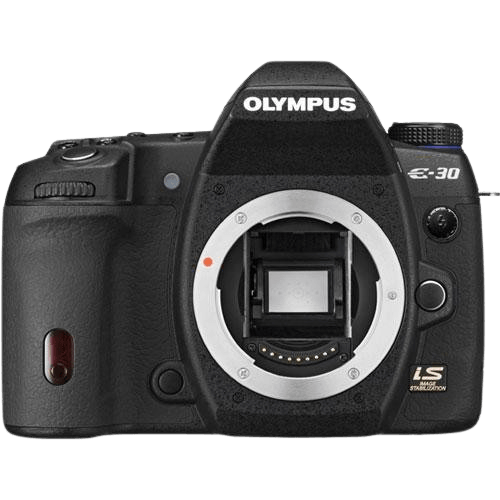Olympus E30 Specs and Scores

The Olympus E30 DSLR camera receives a score of 43/100. Announced on November 5th, 2008, and released the same year, this camera was initially priced at $1689. Measuring 142 x 108 x 75mm and weighing 695g (1.53lbs), the E30 is a relatively compact and lightweight camera. However, considering the advancements in camera technology since 2008, the Olympus E30’s specifications may not hold up well in today’s market. Despite its age, the E30 remains a noteworthy camera for its time.
Olympus E30 Overview and Optics
The Olympus E30’s optics score stands at 44/100. It features a 12.3-megapixel NMOS sensor with a TruePic III+ processor. The camera’s shooting speed is 5 frames per second, and it has a DXOMARK sensor score of 55. The E30 uses a Micro Four Thirds sensor size and a Micro 4/3 lens mount, with built-in image stabilization and a 4:3 aspect ratio.
Compared to other cameras in today’s market, the Olympus E30’s specifications may not be the most competitive. The 12.3-megapixel sensor and 5 fps shooting speed are surpassed by many modern cameras, as is the DXOMARK score of 55. However, the camera’s Micro Four Thirds system and image stabilization remain relevant features.
The Olympus E30 provides solid optics for casual and beginner photographers, but its specifications may not be sufficient for those seeking more advanced capabilities. While the camera has some noteworthy features, it may struggle to compete with newer models in the market.
Olympus E30 Video Performance
The Olympus E30 does not possess video capabilities. This camera focuses on photography alone, without the option to record video.
Olympus E30 Features and Benefits
The Olympus E30 features a score of 34/100, which is not impressive in today’s market. Its screen measures 2.7 inches, with a resolution of 230,000 dots. While the camera does not have a touchscreen, it does possess a flip screen for added convenience.
Unfortunately, the E30 lacks modern connectivity options such as GPS, WiFi, and Bluetooth. These features are now considered standard in many cameras, and their absence in the Olympus E30 renders it less competitive.
Overall, the Olympus E30’s features are not up to par with current camera offerings. Its low feature score and outdated specifications make it less appealing to photographers who seek advanced technology and seamless connectivity in their devices.
Olympus E30 Storage and Battery
The Olympus E30 received a storage and battery score of 68 out of 100. This camera has two memory card slots, accommodating both Compact Flash (Type I or II) and xD Picture Cards. This versatility in storage options is beneficial, although these memory card types may not be as commonly used today as other formats like SD cards.
Regarding battery life, the Olympus E30 can take 750 shots on a single charge using the BLM-1 battery type. This battery life is decent for a camera in its class, but it lacks USB charging capabilities, which is a disadvantage in today’s market where most devices offer this convenient feature.
Taking into account the storage options, battery life, and the lack of USB charging, the Olympus E30’s score of 68 reflects its moderate performance in these areas. While not the best in the market, it still offers a satisfactory experience for users who can work with its specific memory card formats and battery limitations.
